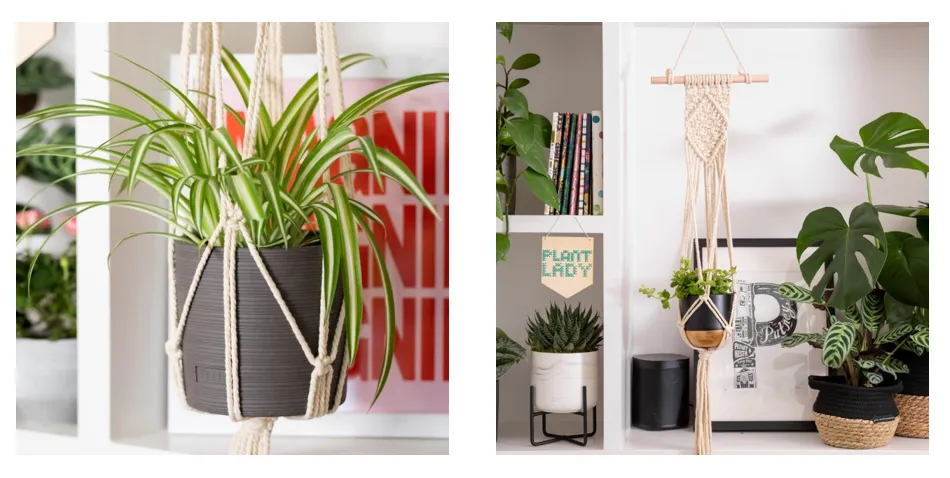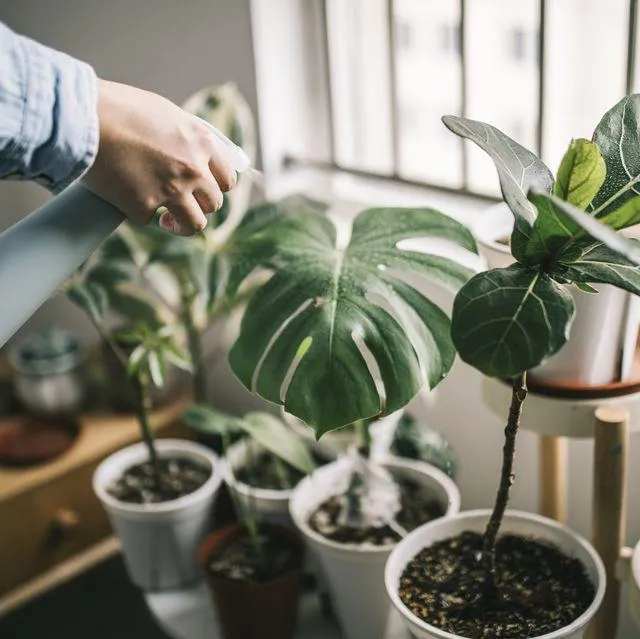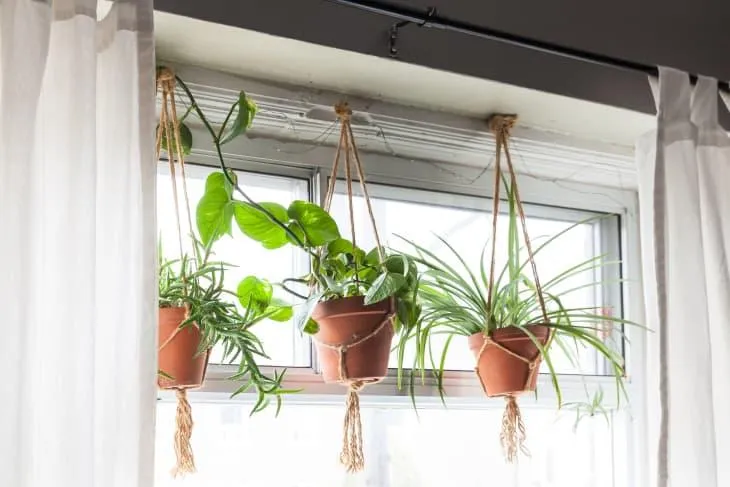The Ultimate Guide to Choosing and Caring for Hanging Indoor Plants
Whether you’re looking to add some greenery to brighten up a dull corner or filter pollutants from your indoor air, hanging plants are a beautiful and low-maintenance option. With so many varieties to choose from, it can feel overwhelming to decide which ones are best for your space and care level. In this article, I’ll break down the top hanging indoor plant picks and provide tips for finding the perfect fit while keeping them happy and healthy.
Choosing the Right Hanging Plants for Your Space
The first step is assessing your space and conditions. Hanging plants do best in areas with medium to bright, indirect light. Direct sun can scorch their leaves. You’ll also want to make sure to have sufficient height – most hung pots need at least 2-3 feet of clearance below. Another factor is size – some varieties stay small while others become trailing behemoths. With these considerations in mind, here are some top contenders:
-
Pothos (Epipremnum aureum) – Commonly known as devil’s ivy, pothos is arguably the ideal hanging plant. It thrives in low to medium light andtolerates neglect well. Pothos comes in various color varieties and grows as a tightly clinging vine or as a bushier plant. It’s nearly impossible to kill!
-
Philodendron – Like pothos, philodendron comes in many kinds. Heartleaf (P. hederaceum) is a classic with its heart-shaped leaves. Brazilian (P. brasil) boasts gorgeous green leaves with vibrant pink undersides. Most philodendron varieties are very low maintenance.

-
Spider plant (Chlorophytum comosum) – With its long, arching leaves and miniature plantlets that form on stems, spider plant is iconic for good reason. It does well in low to medium light and benefits from occasional water. Spider plants clean indoor air, too!
-
English ivy (Hedera helix) – Unlike other trailing plants, English ivy enjoys moderate to low light. Just be aware it can become invasive if conditions are right. I love how itadds texture with its small, glossy leaves.
Tips for Choosing the Right Pot and Hanging Hardware
Finding a container that’s the proper size and has adequate drainage is key for healthy plants. Clay or plastic pots tend to dry out slowly while terra cotta is more breathable. Aim to fill the pot only 2/3 full with soil to allow room for growth. And don’t forget hanging accessories!Macrame hangers or chains work well. Make sure they can support the pot weight when wet.
Best Indoor Growing Medium
While you can use plain potting soil, most houseplants do better with a soil specially formulated for indoor conditions. Look for a soil that retains moisture well while allowing excess water to drain away to prevent root rot. I recommend cactus/succulent potting mixes which are lighter and better aerated than regular soils. For nutrients, use a dilute liquid houseplant food every few months in the growing season.

Watering Hanging Plants Correctly
Underwatering is more common than overwatering for hanging plants. The key is allowing the topsoil to dry out somewhat in between waterings. I follow a simple rule of thumb: if the top soil is dry to the touch 1-2 inches down, it’s time to water. Give the plant a thorough soak until water drains freely from the bottom. Then empty any excess from the saucer. Mosy hanging plants only need watering once every 1-2 weeks.
Maintaining Healthy Hanging Plants
A few other tips will keep your hanging plant friends looking their best:
- Rotate the pot periodically so all sides receive even light exposure
- Wipe down leaves occasionally with a damp cloth to remove dust
- Prune off any badly wilted or diseased sections
- Repot annually in early spring if roots are filling the container
- Fertilize during the growing season for optimum green growth
With the right selection and care, hanging plants are practically low-maintenance accessories that help beautify your space for years. From my experience, pothos and spider plants have been the most forgiving varieties. But philodendron, ivy and other pictures have also thrived with minimal effort on my part. The key is finding a plant well-suited to your conditions. Hopefully this guide has helped reveal some top hanging plant options to brighten up your indoor jungle!
Dealing with Common Hanging Plant Problems
No matter how well you care for your hanging garden companions, some issues can still crop up. Here are solutions I’ve used when faced with these situations:

Leaf drop: This usually means the plant is not getting enough light or water. Move it to a sunnier spot and water more consistently.
Wilting leaves: Underwatering is often the cause. Give the plant a thorough soak and check the soil more frequently going forward.
Brown tips: This indicates overly dry air. Group plants together or use a pebble tray to boost humidity. Flush minerals from the soil as well.
Mealybugs: Isolate the infected plant and treat immediately with neem oil or insecticidal soap. Check other plants too in case of spread. Repeated treatments may be needed.

With some trial and error, you’ll sort out any issues and be on your way to a thriving indoor jungle! Reach out if you need any other hanging plant help.
Best Hanging Plants for Indoors
| Plant | Care Level | Light Needs | Size |
|---|---|---|---|
| Pothos | Low | Low | Small to Large |
| Philodendron | Low | Low to Medium | Small to Large |
| Spider Plant | Low | Low to Bright Indirect | Small |
| Chinese Evergreen | Low | Medium | Small to Medium |
| Peperomia | Low | Low to Medium | Small |
FAQ
- What kind of plants are best for indoor hanging baskets? Basically, the ideal indoor hanging plants are ones that don’t need a ton of sunlight and don’t mind getting a little dry between waterings. Some top options include pothos, philodendron, spider plants, English ivy, and Chinese evergreen.
- How often should I water hanging basket plants? It sort of depends on the plant. As a general rule, check the soil everyday and water when the top inch feels dry. During the warmer months you may need to water every few days, but in the cooler months you can go a week or more between waterings. The key is waiting until the soil is somewhat dry.
- What kind of soil is best for hanging baskets? Most garden stores sell potting mixes specifically for containers and hanging baskets. These mixes drain better than regular garden soil. You want a soil that drains well but also retains some moisture. A good potting soil or an all-purpose mix will work great.
- Do hanging plants need fertilizer? Perhaps not all the time, but it’s a good idea to give your hanging basket plants a mild liquid fertilizer once a month during the growing season. This helps replace nutrients that are washed away when you water. Look for a general all-purpose fertilizer suitable for houseplants.
- How do I care for my hanging baskets over winter? You have some options for caring for hanging baskets indoors in the colder months. You can possibly bring them inside if you have a bright, sunny spot. Otherwise, cut back on watering and fertilizing, and let the plants go semi-dormant. Another choice is replacing the annuals with winter-hardy foliage plants or mini succulents. Amazingly, some plants even go outside for the winter!
- What can I do if my hanging baskets dry out too fast? If a hanging basket seems to dry out awfully quick, there are a couple things you can try. Add some water-holding polymer crystals to the soil, which absorb water like a sponge. You can also try lining the bottom of the basket with a sheet of aluminum foil or plastic to create a moisture barrier. One more idea is to put some pebbles in the saucer under the basket – the evaporation helps keep the roots a tiny bit more humid.
- How do I keep my hanging baskets looking their best? To keep hanging baskets looking stunning, be sure to remove any dead or dying foliage or flowers right away. This prevents them sort of strangling the healthy growth. Give the plants a trim now and then to encourage bushiness. Spritz with water to remove dust. Fertilize monthly in spring and summer. Change the soil yearly before the warm months begin again. With some TLC, your hanging greenery will shine all season long!
- What can I do if pests bother my hanging plants? Unfortunately, pests like spider mites, whiteflies or mealybugs may find their way to indoor hanging baskets. Regular inspection allows for early detection. Isolate and clean infected plants, and treat with neem oil, insecticidal soap or other organic pesticides if needed. You can use sticky traps, too. As a preventative, wash plant leaves occasionally with a gentle spray of water.
Additional Tips
Despite the challenges of meeting their needs indoors, hanging basket plants can bring an awesome kind of joy to a home or office space. When choosing plants, go for types you find easy or at least somewhat familiar. It makes the learning curve less steep. Experiment and observe how fast different plants drain out – not all pots behave the same. Maybe mark moisture levels on pot sides if wet/dry patterns remain elusive. Above all, remember to relax and have fun with it! Plant care should soothe the soul, not burden the spirit.
